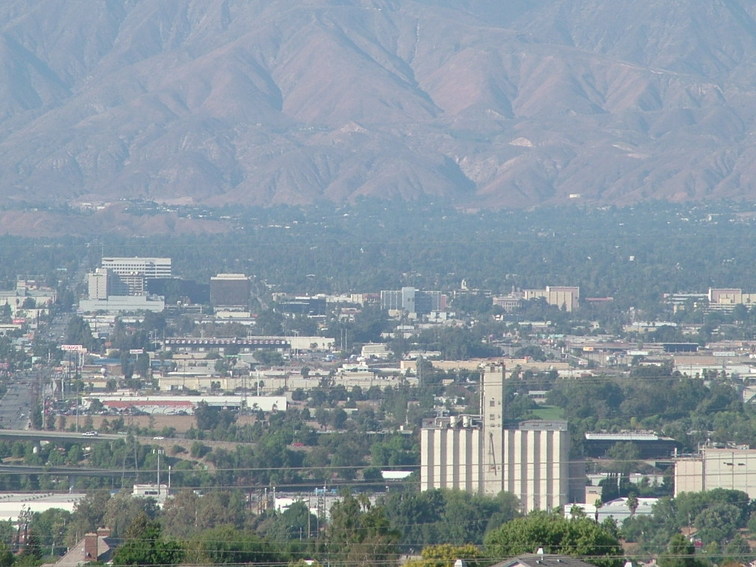San Bernardino County is one of the most diverse counties in California. With a whopping 48% population who are foreign-born, there is definitely something for everyone when it comes to this county. If you’re looking for a place to call home, we’ve got you covered. In this post, we will list all of the towns and Cities in San Bernardino County, CA so that you can get a better sense of what’s available to you. From small towns to large metropolitan areas, there is something for everyone in this county.

List of all cities in San Bernardino County With Postal Code
| City/Town | Postal Code | Area Code |
| Adelanto, CA | 92301 | 760 |
| Alta Loma, CA | 91701 | 909 |
| 91737 | 909 | |
| Amboy, CA | 92304 | 760 |
| Angelus Oaks, CA | 92305 | 909 |
| Apple Valley, CA | 92307 | 760 |
| 92308 | 760 | |
| Argus, CA | 93562 | 760 |
| Arrowbear Lake, CA | 92382 | 909 |
| Arrowhead Farms, CA | 92407 | 909 |
| Baker, CA | 92309 | 760 |
| 92364 | 760 | |
| Ballarat, CA | 93562 | 760 |
| Barstow, CA | 92310 | 760 |
| 92311 | 760 | |
| 92312 | 760 | |
| Base Line, CA | 92410 | 909 |
| Big Bear, CA | 92315 | 909 |
| Big Bear City, CA | 92314 | 909 |
| 92386 | 909 | |
| Big Bear Lake, CA | 92315 | 909 |
| Big River, CA | 92242 | 760 |
| Black Meadow Landing, CA | 92267 | 760 |
| Bloomington, CA | 92316 | 909 |
| Blue Jay, CA | 92317 | 909 |
| Blythe, CA | 92280 | 760 |
| Bryn Mawr, CA | 92318 | 909 |
| Cadiz, CA | 92304 | 760 |
| Cajon Junction, CA | 92407 | 909 |
| Campus Crusade for Christ, CA | 92414 | 909 |
| 92424 | 909 | |
| Cedar Glen, CA | 92321 | 909 |
| Cedar Pines Park, CA | 92322 | 909 |
| Cedarpines Park, CA | 92322 | 909 |
| Chemehuevi, CA | 92363 | 760 |
| Chemehuevi Valley, CA | 92363 | 760 |
San Bernardino County, founded in 1853, is one of California’s 58 counties. San Bernardino County was historically formed from Los Angeles County. Bernardino serves as the county seat. San Bernardino County has a population of 2,194,710 people and an area of 20,062 square miles, according to the FIPS code 71. (51,960 km2).
National City
 National City is a city in San Bernardino County, California, United States. It is located in the Inland Empire region of Southern California. As of the 2010 census, the population was 117,821. National City’s motto is “The Place to Be.”
National City is a city in San Bernardino County, California, United States. It is located in the Inland Empire region of Southern California. As of the 2010 census, the population was 117,821. National City’s motto is “The Place to Be.”
National City was founded by George W. Hays in 1887 and was originally called Hicksville. The town got its name from Senator Thomas Hart Benton who coined the term “National City” in order to describe an ideal American community. Originally, National City consisted of just a few stores and a hotel on what is now State Route 58. By 1903, the town had grown enough that it incorporated as a city with a population of 9,000 people.
Today, National City is known for its large number of restaurants and nightclubs as well as its high-rise buildings and major shopping centers. The city also has several educational institutions including two universities: Cal State University Dominguez Hills and Azusa Pacific University. The city also has a large military presence with many bases located within its boundaries including Naval Base Coronado and Marine Corps Base Camp Pendleton among others.
Read interesting Article: 20 Best Restaurants in Dunedin, FL Top-Rated Places to Eat!
Pinon Hills
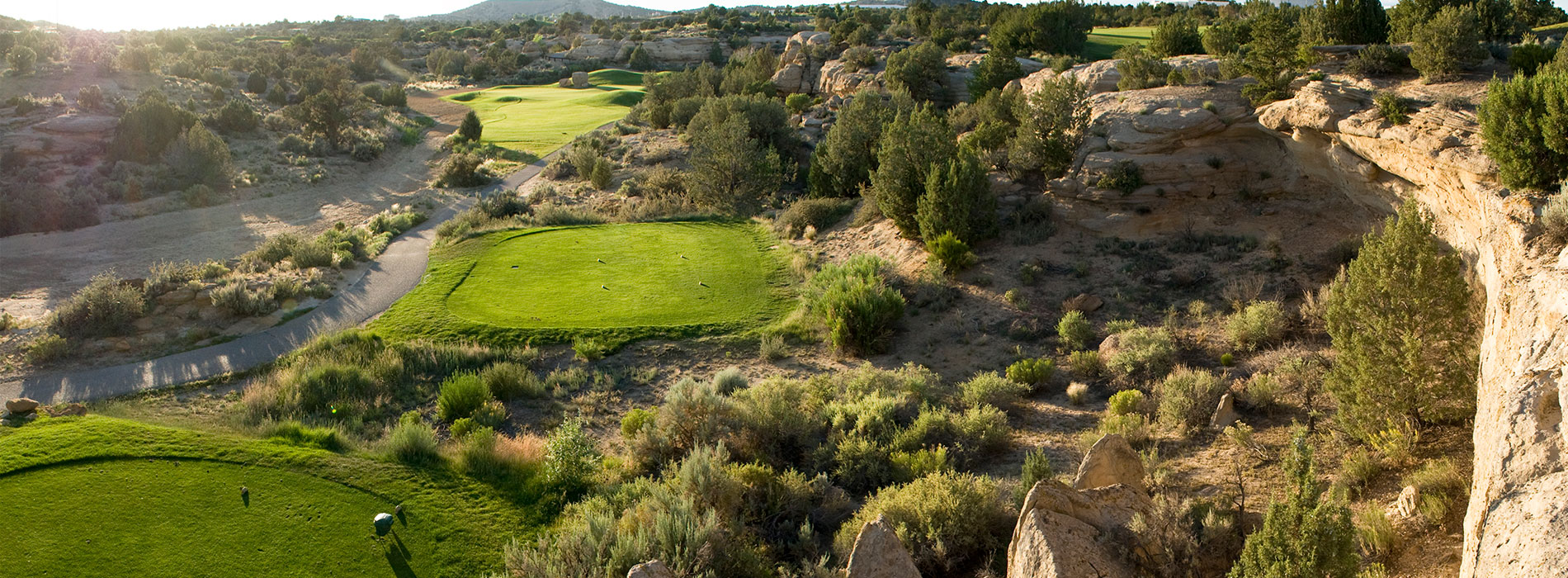
Pinon Hills is a town in San Bernardino County, California, United States. The population was 1,859 at the 2010 census. The town is located in the high desert of eastern San Bernardino County, on the east side of Interstate 10 about northeast of Victorville.
The 2010 US Census detailed that Piñon Slopes had a populace of 7,272. The populace thickness was 226.4 occupants per square mile (87.4/km2). The racial cosmetics of Piñon Slopes was 5,966 (82.0%) White (70.3% Non-Hispanic White), 58 (0.8%) African American, 65 (0.9%) Local American, 189 (2.6%) Asian, 4 (0.1%) Pacific Islander, 659 (9.1%) from different races, and 331 (4.6%) from at least two races. Hispanic or Latino of any race were 1,738 people (23.9%).
The Enumeration revealed that 7,271 individuals (100 percent of the populace) resided in families, 1 (0%) lived in non-organized bunch quarters, and 0 (0%) were regulated.
There were 2,566 families, out of which 880 (34.3%) had kids younger than 18 residing in them, 1,518 (59.2%) were other gender hitched couples living respectively, 244 (9.5%) had a female householder with no spouse present, 151 (5.9%) had a male householder with no wife present. There were 135 (5.3%) unmarried other gender associations, and 15 (0.6%) same-sex wedded couples or organizations. 526 families (20.5%) were comprised of people, and 189 (7.4%) had somebody living alone who was 65 years old or more established. The typical family size was 2.83. There were 1,913 families (74.6% of all families); the typical family size was 3.27.
Rancho Cucamonga
 Rancho Cucamonga is a suburban city located in San Bernardino County, California, United States. The population was 106,098 at the 2010 census. Rancho Cucamonga is the easternmost city in Orange County and shares a border with Riverside County, as well as the Inland Empire region. The city’s two primary thoroughfares are SR 79 and SR 210. The Serra Valley Golf Course is located in Rancho Cucamonga.
Rancho Cucamonga is a suburban city located in San Bernardino County, California, United States. The population was 106,098 at the 2010 census. Rancho Cucamonga is the easternmost city in Orange County and shares a border with Riverside County, as well as the Inland Empire region. The city’s two primary thoroughfares are SR 79 and SR 210. The Serra Valley Golf Course is located in Rancho Cucamonga.
Rancho Cucamonga, city, San Bernardino area, southern California, U.S. Part of the “Inland Realm” area (involving San Bernardino and Riverside provinces), it is situated on an alluvial plain close to the eastern finish of the San Gabriel Mountains, 37 miles (60 km) east of focal Los Angeles. The region, initially occupied by the Tongva (or Gabrielino) Indians (its name gets from the Indian word kukamonga, signifying “sandy spot”), was investigated in 1769 by a Spanish undertaking drove by Gaspar de Portolá. It turned out to be essential for a land award gave to Tiburcio Tapía (1839), who there laid out a winery (the most established in the state and the second most established in the US).
Rancho de Cucamonga was purchased in 1858 by John Downpours and his significant other; their home, Casa de Rancho Cucamonga (assembled 1860), has been reestablished and is recorded on the Public Register of Noteworthy Spots. In 1870 the land was purchased by San Francisco finance managers who shaped the Cucamonga Organization. By 1887 a railroad was giving a connection to the area, which consequently was partitioned into three networks: Cucamonga, Alta Loma, and Etiwanda; the towns casted a ballot to consolidate as Rancho Cucamonga in 1977.
The financial backbone of the networks was horticulture, especially citrus natural products, olives, and peaches, and there were likewise grape plantations. The city is currently generally private, with a few assembling and aviation enterprises and retail organizations. The region was long a transportation place, with trails and streets (e.g., the Cajon Pass; the Mojave, Old Spanish, and Sante Fe trails; El Camino Genuine [“King’s Highway”]; the Butterfield Stagecoach Endlessly highway 66) getting through the city. A junior college was laid out in Rancho Cucamonga in 1883, and there are likewise satellite grounds of the College of Redlands and the College of La Verne. The city has a yearly Grape Collect Celebration (first held in 1939). San Bernardino and Angeles public woodlands are north of the city. Inc. 1977. Pop. (2010) 165,269; (2020) 174,453.
Upland
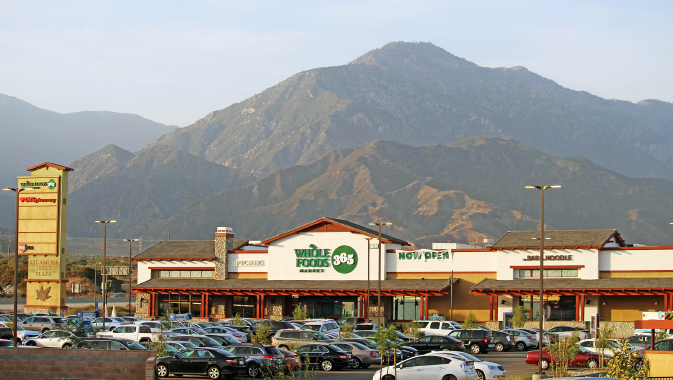
Located in the Inland Empire region of Southern California, San Bernardino County is the largest county in California by area. The county seat is San Bernardino. Other major cities include Riverside, Victorville, and Ontario. The county has a total population of 2,922,844 as of 2015.
The list includes all of the towns and cities in San Bernardino County with their respective populations as of the 2010 census
| cities in San Bernardino | respective populations |
| San Bernardino | 122,815 |
| Riverside | 273,235 |
| Victorville | 134,527 |
| Ontario | 107,090 |
Upland is situated at the foot of the San Gabriel Mountains on an east-west path that was utilized by the Local Americans and Spanish evangelists, a piece of what is presently known as the Old Spanish Trail. Toward the west, the path prompted the San Gabriel Mission, which Spanish Ministers worked in 1771.
In 1774, Spanish pioneer Juan Bautista de Anza laid out an overland course from Arizona to California, with a piece of the path going through present day Upland while heading to the San Gabriel Mission. Anza’s course went through Yuma, the San Gorgonio Pass and through the San Bernardino Valley. In 1775, Anza drove a subsequent campaign comprising of in excess of 240 individuals on an excursion of north of 2,000 miles to the San Francisco Straight. On the way, the endeavor arrived at the San Gabriel Mission on January 4, 1776.
The campaign arrived at the San Francisco Sound on June 27, 1776, where Anza established the current day city of San Francisco. Five years after the fact, in 1781, Spanish pioneers followed Anza’s course to establish the city of Los Angeles a couple of miles west of the San Gabriel Mission
Fontana
Fontana is a suburban city located in San Bernardino County, California, United States. As of the 2010 census, the population was 193,096. Fontana was originally an agricultural town founded by Frank Fontana and his brother-in-law John Germani in 1887. The city grew rapidly in the late twentieth century as it became a bedroom community for Los Angeles and as a result has many large tract homes. Today, it is home to branches of several major corporations, including Lockheed Martin and SBC Communications.
How Fontana Began
Fontana, founded in 1913, is now the second largest city in San Bernardino County and the 19th largest in California. Fontana began as an agricultural settlement in 1913 and became a successful industrial town by 1942, thanks to the opening of Henry J. Kaiser’s steel mill activities on the outskirts of town during World War II. Kaiser Steel remained a major source of employment and revenue until its closure in 1984. His legacy is carried on at the Fontana Kaiser Permanente Facility, which presently employs over 6,000 people. Since then, the city has grown fast due to a variety of factors, including the construction of the Kaiser Permanente Hospital facility (one of the major medical facilities in the region) and the establishment of the Kaiser Permanente Medical Center.
Fontana’s Unique Location
The City of Fontana was consolidated on June 25, 1952. The City and its Effective reach (SOI) incorporate an area of roughly 52.4 square miles and contain a populace of around 213,000 individuals. It is situated in San Bernardino Province, roughly 50 miles east of Los Angeles. Because of its geographic area, the City is distinguished as “… the intersection of the Inland Realm” (Fontana Office of Business, 2008).
Fontana keeps on being a fundamental center point for the production network, because of the City’s area at the junction of significant shipping lanes (I-10, I-15, and SR-210) and the presence of the Association Pacific Railroad. The City is additionally home to numerous huge retailers and independent companies. The Fontana Metrolink station gives a low-stress driving choice for occupants working in the Los Angeles metropolitan region.
Trabuco Canyon

Trabuco Canyon is a scenic area located in the San Bernardino Mountains in eastern San Bernardino County, California. The canyon, about long and wide, was carved by the San Andreas Fault during the Cenozoic Era. It features high cliffs, stunning rock formations, and rushing waterfalls. The upper part of the canyon is open to visitors while the lower part is accessible only by hiking or riding horses.
Read This: 20 Best Things To Do In Downtown Miami
The town of Devore lies at the bottom of Trabuco Canyon. The community was founded in 1886 by W.A. Devore, who named it for Trabucco Valley in Italy. The name means “thunderous creek” in Italian. Other towns located near Trabuco Canyon include Julian, Apple Valley, and Hesperia.
History
Trabuco is Spanish for blunderbuss, a sort of shotgun. Some credit a Franciscan minister going with the Gaspar de Portolá Undertaking in 1769 with the story that a blunderbuss was lost in the gorge, after which the region was named. A mission was initially to be underlying the gulch, however was rather settled in San Juan Capistrano.
The Trabuco Adobe was worked in 1810 close to the Acjachemen town of Alume that was likewise distinguished during the 1769 Portolá undertaking, where Juan Crespí expressed, “we caused camp near a town of the most manageable and cordial barbarians we to have seen upon the entire way.”
John (Cassanova) Forster got a Mexican land award in 1846 and laid out Rancho Trabuco. The award was lined by Rancho Cañada de los Alisos on the west, and by Rancho Mission Viejo on the east.
Trabuco Ravine was the site of endeavors to mine tin in the mid 1900s. Mining stays from this action include: burrows into the sides of the gulch (shut for public wellbeing); the stone underpinning of a metal handling stamp plant; and a few dams on the rivulet.
Highland Falls

Falls is a small town located in the Inland Empire of Southern California. Highland Falls is known for its hot springs, which are the only hot springs in San Bernardino County. The town also has a variety of shops and restaurants, as well as a park.
Demographics
There were 1,647 families, out of which 29.5% had kids younger than 18 residing with them, 40.9% were hitched couples living respectively, 14.1% had a female householder with no spouse present, and 40.0% were non-families. 34.5% of all families were comprised of people, and 10.9% had somebody living alone who was 65 years old or more seasoned. The typical family size was 2.37 and the normal family size was 3.07.
In the town, the populace was fanned out, with 22.1% younger than 18, 8.2% from 18 to 24, 27.9% from 25 to 44, 28.6% from 45 to 64, and 13.2% who were 65 years old or more established. The middle age was 40.2 years. For each 100 females, there were 97.1 guys. For each 100 females over the age of 18, there were 92.9 guys.
A three-story high block working with an enlivening veneer generally painted yellow shot from its left. Two squad cars and a streetlamp are in front.
Town Corridor, recorded on the Public Register of Noteworthy Spots
The assessed middle pay for a family in the town was $65,192, and the assessed middle pay for a family was $73,672. Guys had an expected middle pay of $47,069 versus $43,654 for females. The assessed per capita pay for the town was $29,006. Around 11.6% of families and 10.9% of the populace were beneath the neediness line, including 14.0% of those under age 18 and 9.7% of those age 65 or over.
Hesperia
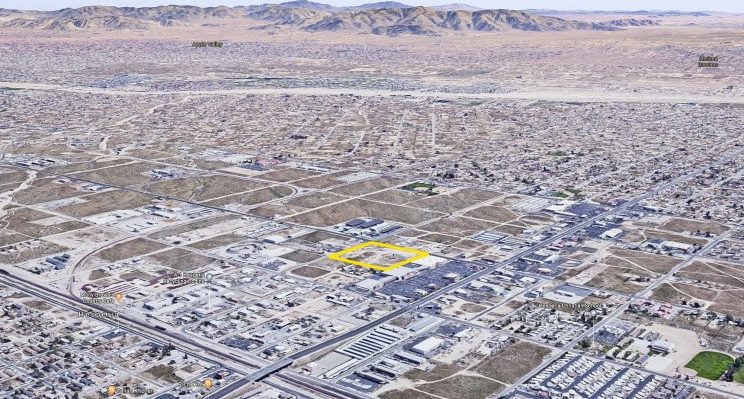
Hesperia is a city in San Bernardino County, California. It is located east of Victorville and west of Barstow. The population was 26,815 at the 2010 census, up from 16,752 at the 2000 census. Hesperia is bordered by Victorville to the south and east, Barstow to the northeast, Adelanto to the northwest, and Lake Elsinore to the west.
History
The main occupants of the region were the Desert Serrano (Vanyume). The town of Wá’peat, among a few different towns that were situated along the Mojave Stream, were inside the area of what is currently Hesperia. These towns were involved into the mid 1800s and had profound binds with each other. An oak seed assembling celebration was held at Wá’peat that elaborate townspeople from across the Mojave Waterway area.
Hesperia started as a Spanish land award: Rancho San Felipe, Las Flores y el Paso del Cajon, established in 1781. The land was meagerly occupied desert during Spanish-Mexican rule in the nineteenth 100 years. The U.S. attached the district alongside Southern California after the Mexican-American Conflict in 1848.
In 1869, Max Stobel bought 35,000 sections of land (14,000 ha) from the US Government Land Office for $40,000. While a few endeavors were made to partition and energize colonization, the land was essential utilized for horticultural purposes, with raisin grapes the essential product.
The town site was spread out in 1891 by railroad organization land engineers of the St Nick Fe Railroad, which was finished that year. Hesperia was named for Hesperus, the Greek lord of the West. The railroad land engineers distributed handouts circulated the nation over with boosterism of Hesperia, California, as a possible city, to turn into “the Omaha of the West” or projections to have more than 100,000 individuals by 1900, yet at the same just 1,000 moved in
Inland Empire

The Inland Empire is a region of Southern California that stretches from the high desert to the mountains. The region includes San Bernardino County, which contains the cities of San Bernardino, Ontario, Colton and Chino Hills.
History
What is currently known as the Inland Realm was occupied for millennia, before the late eighteenth hundred years, by the Tongva, Serrano, and Cahuilla Local Americans. With Spanish colonization and the ensuing Mexican period the region was meagerly populated at the land award Ranchos, taking into account it unacceptable for missions.[citation needed] The main American pilgrims, a gathering of Mormon trailblazers, showed up over the Cajon Pass in 1851. Albeit the Mormons left an insufficient six years after the fact, reviewed to Salt Lake City by Brigham Youthful during the congregation’s Utah Battle with the U.S. government, different pilgrims before long followed.
The whole body of land of Southern California was partitioned by the San Bernardino Meridian, which was first plotted as a component of the Public Land Review Framework in November 1852, by Col. Henry Washington. Standard Street, a significant lane, today runs from High country to San Dimas, discontinuously along the outright gauge facilitates plotted by Col. Washington.[8] San Bernardino District was first shaped out of parts of Los Angeles Region on April 26, 1853.
While the segment once included what is today the vast majority of Riverside District, the locale isn’t generally so solid as it might sound. Contentions between Colton, Redlands, Riverside and San Bernardino over the area of the province seat during the 1890s made every one of them structure their own metro networks, each with their own papers. On August 14, 1893, the state Senate permitted Riverside District to shape out of land beforehand in San Bernardino and San Diego provinces, subsequent to dismissing a bill for Pomona to part from L.A. Area and turned into the seat of what might have been called San Antonio Province
San Bernardino
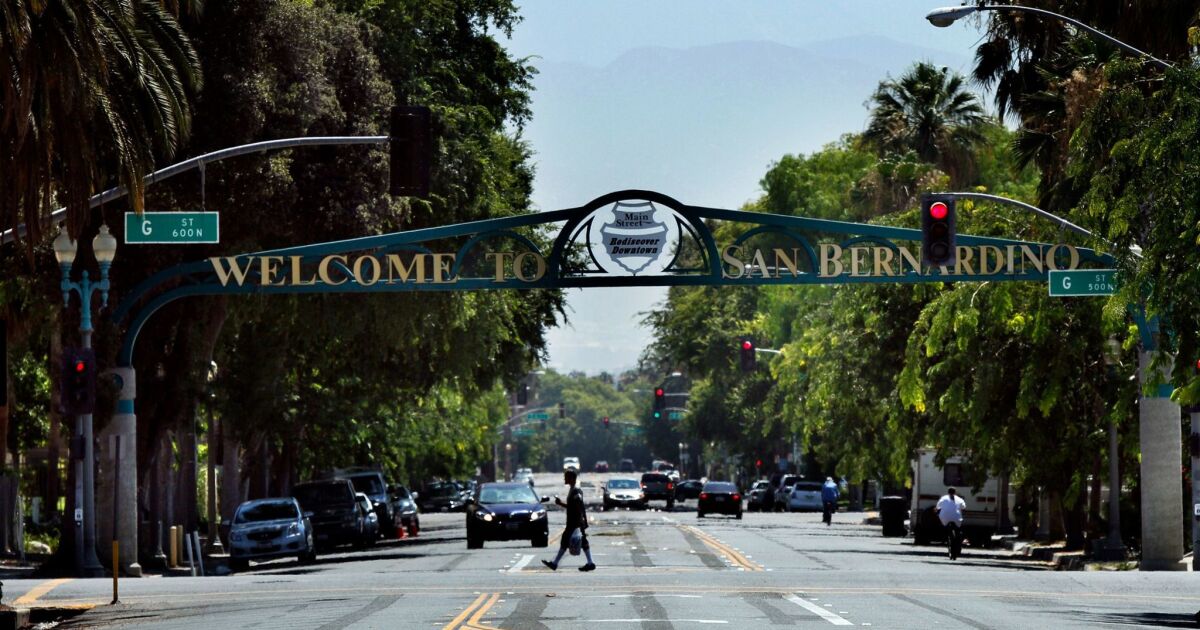
In 1851, three years after California became a state, the land that would become San Bernardino was included in the huge Rancho San Bernardino grant from Mexican government to William Workman and his brother-in-law John Rowland. Rowland built an adobe on a portion of the grant and named it Rowlandia after himself. A small community developed nearby and by 1865 there were about 100 people living in Rowlandia. However, floods destroyed much of the town in 1866, and it was not until 1872 that settlers again attempted to establish a permanent settlement. They succeeded this time and named their new town Riverside after Riverside County, which had been created in 1893 out of parts of San Bernardino County. The first post office opened in Riverside on April 20, 1875.
Rowlandsburg was laid out around 1870 by Edward Fitzgerald Beale as a community for wealthy summer residents near Lake Arrowhead; it took its name from Ewell Karrrow Beale (1813-1892), benefactor of Southern California College (later UC Riverside). Beale bought 2,000 acres (8 km2) from
NEW ORLEANS

There are many towns and cities in San Bernardino County, California. Some of the larger ones include:
- Anaheim
- Brea
- Cerritos
- Chino Hills
- Claremont
- El Monte
- Fontana
- Garden Grove
- Hawthorne and Redlands.
History
La Nouvelle-Orléans (New Orleans) was established in the spring of 1718 has turned into the conventional date to check the commemoration, however the real day is by the French Mississippi Organization, under the course of Jean-Baptiste Le Moyne de Bienville, ashore possessed by the Chitimacha. It was named for Philippe II, Duke of Orléans, who was official of the Realm of France at the time. His title came from the French city of Orléans. The French settlement of Louisiana was surrendered to the Spanish Domain in the 1763 Arrangement of Paris, following France’s loss by Extraordinary England in the Seven Years’ Conflict. During the American Progressive Conflict, New Orleans was a significant port for pirating help to the American progressives, and moving military hardware and supplies up the Mississippi Waterway. Starting during the 1760s, Filipinos started to get comfortable and around New Orleans. Bernardo de Gálvez y Madrid, Count of Gálvez effectively coordinated a southern mission against the English from the city in 1779. Nueva Orleans (the name of New Orleans in Spanish) stayed under Spanish control until 1803, when it returned momentarily to French rule. Practically all of the enduring eighteenth century design of the Vieux Carré (French Quarter) dates from the Spanish time frame, outstandingly with the exception of the Old Ursuline Convent.
The Revolt occurred in what is currently Natchez Public Authentic Park in Natchez, Mississippi.
As a French state, Louisiana confronted battles with various Local American clans, who were exploring the contending interests of France, Spain, and Britain, as well as customary opponents. Eminently, the Natchez, whose conventional grounds were along the Mississippi close to the cutting edge city of Natchez, Mississippi, had a progression of wars coming full circle in the Natchez Revolt that started in 1729 with the Natchez overwhelming Stronghold Rosalie. Around 230 French homesteaders were killed and the Natchez settlement annihilated, causing dread and worry in New Orleans and the remainder of the territory.
ONTARIO
:max_bytes(150000):strip_icc()/GettyImages-685015187-597dd84a519de2001182016b.jpg) The city of Ontario is located in San Bernardino County, California. It was incorporated on December 3, 1912. The population was 38,827 at the 2010 census. Ontario is home to the Ontario International Airport and several other businesses. There are also many parks and attractions in the area.
The city of Ontario is located in San Bernardino County, California. It was incorporated on December 3, 1912. The population was 38,827 at the 2010 census. Ontario is home to the Ontario International Airport and several other businesses. There are also many parks and attractions in the area.
Soils
Notwithstanding peat, Northern Ontario comprises to a great extent of brown podzolic (mineral-covered, filtered) soils unsatisfactory for horticulture, with the exception of two dirt belts in the Timiskaming and Cochrane cultivating regions. In Southern Ontario, ice sheets left a rich dim brown podzolic soil over the greater part of the locale, in spite of the fact that sand fields are found north of Lake Erie and along the eastern Lake Ontario shore.
Environment
In Northern Ontario the environment differs from that of the regions near the Incomparable Lakes, which are sans ice on over 100 days every year, to the cruel environment of the Hudson Sound region, where the ice free period might be just about as short as 40 days. At Thunder Straight on Lake Predominant, the mean temperature in January is 5 °F (−15 °C) and in July 64 °F (18 °C); the yearly precipitation is around 28 inches (700 mm); and the yearly snowfall is somewhat under 85 inches (2,160 mm).
The environment of Southern Ontario is for the most part ideal for horticulture, albeit extensive neighborhood variety exists. The eastern area, away from the directing impact of the lakes, will in general be cooler and more sticky than the southern and southwestern zones. Ottawa gets just shy of 35 inches (900 mm) of downpour and somewhat more than 85 inches (2,160 mm) of snow yearly, as contrasted and Toronto’s around 31 inches (790 mm) of downpour and 54 inches (1,370 mm) of snow. The mean temperature in January for the majority of the southern locale is around 25 °F (−4 °C); in July it is around 72 °F (22 °C). The Ottawa valley, in any case, has mean temperatures of 13 °F (−11 °C) and 69 °F (21 °C).
GASTONIA

Gastonia is a city in San Bernardino County, California, United States. The population was 28,273 at the 2010 census. Gastonia is located in the Inland Empire region of Southern California, about 20 miles east of downtown Los Angeles. The city is named for American Revolutionary War general and U.S. Representative General Lafayette (1757-1834).
History
The Loray Factory strike of 1929 in Gastonia was perhaps of the most remarkable strike in the work history of the US. The job of coordinators for Socialist Coalition partnered Public Material Specialists Association (NTWU) distanced strict innovators in Gastonia, who reprimanded the coordinators’ belief system, sabotaging support for the strike.[8] The strike fell after the passing of Gastonia’s police boss, Orville Alderholt, prompted a homicide preliminary of a few aggressors including NTWU boss coordinator Fred Beal.[9] Beal was sentenced in the killing yet escaped to the Soviet Association. The strike to a great extent flopped in accomplishing its objectives of better working circumstances and wages, and the American work development was always unable to acquire a traction among material laborers in Gastonia. The strike, nonetheless, became for some time a worldwide reason célèbre, figuring in a few books distributed during the 1930s.
Geography
As per the US Registration Department, the city has an all out area of 50.7 square miles (131.4 km2), of which 50.5 square miles (130.8 km2) is land and 0.23 square miles (0.6 km2), or 0.45%, is water.[12] Gastonia involves 14% of the all out area of Gaston Province. Gastonia is around 21 miles (34 km) west of Charlotte, 22 miles (35 km) east of Shelby, and 37 miles (60 km) south of Hickory.
APPLE VALLEY

Apple Valley is a census-designated place in San Bernardino County, California. The population was 18,000 at the 2010 census. Apple Valley is located northeast of Victorville and southwest of Redlands in the Mojave Desert.
HIGHLAND

San Bernardino County, located in Southern California, is home to a diverse array of towns and cities. These include: Banning, Beaumont, Big Bear Lake, Cathedral City, Chino Hills, Colton, Covina, Fontana, Glen Ellen, Hesperia, Highland and Moreno Valley.
Good country (and adjoining “East High countries”) is a city in San Bernardino Region, California, US. The number of inhabitants in the city was 53,104 as of the 2010 enumeration, up from 44,605 at the 2000 statistics. The term Good country likewise alludes to a geological region of the city of San Bernardino (by and large east of Del Rosa Road toward the eastern city cutoff points), and portions of unincorporated San Bernardino District. High country is for the most part separated into two districts, East High countries and High country.
Demographics
At the 2010 statistics Good country had a populace of 53,104. The populace thickness was 2,811.3 occupants per square mile (1,085.4/km2). The racial cosmetics of Good country was 27,836 (52.4%) White (30.8% Non-Hispanic White),[7] 5,887 (11.1%) African American, 542 (1.0%) Local American, 3,954 (7.4%) Asian, 168 (0.3%) Pacific Islander, 11,826 (22.3%) from different races, and 2,891 (5.4%) from at least two races. Hispanic or Latino of any race were 25,556 people (48.1%).[8]
The statistics detailed that 52,932 individuals (99.7% of the populace) resided in families, 76 (0.1%) lived in non-systematized bunch quarters, and 96 (0.2%) were standardized.
There were 15,471 families, 7,922 (51.2%) had kids younger than 18 residing in them, 8,475 (54.8%) were other gender hitched couples living respectively, 2,884 (18.6%) had a female householder with no spouse present, 1,183 (7.6%) had a male householder with no wife present. There were 1,129 (7.3%) unmarried other gender associations, and 109 (0.7%) same-sex wedded couples or associations. 2,254 families (14.6%) were one individual and 757 (4.9%) had somebody living alone who was 65 or more seasoned. The typical family size was 3.42. There were 12,542 families (81.1% of families); the typical family size was 3.74.
Final Words
With a population of over 1.3 million people, San Bernardino County is one of the most populated counties in California. It includes over 100 towns and cities, each with its own unique culture and attractions.
Below is a list of all the towns and cities in San Bernardino County, California. Check More Information about Tourism on Growinggem.com
